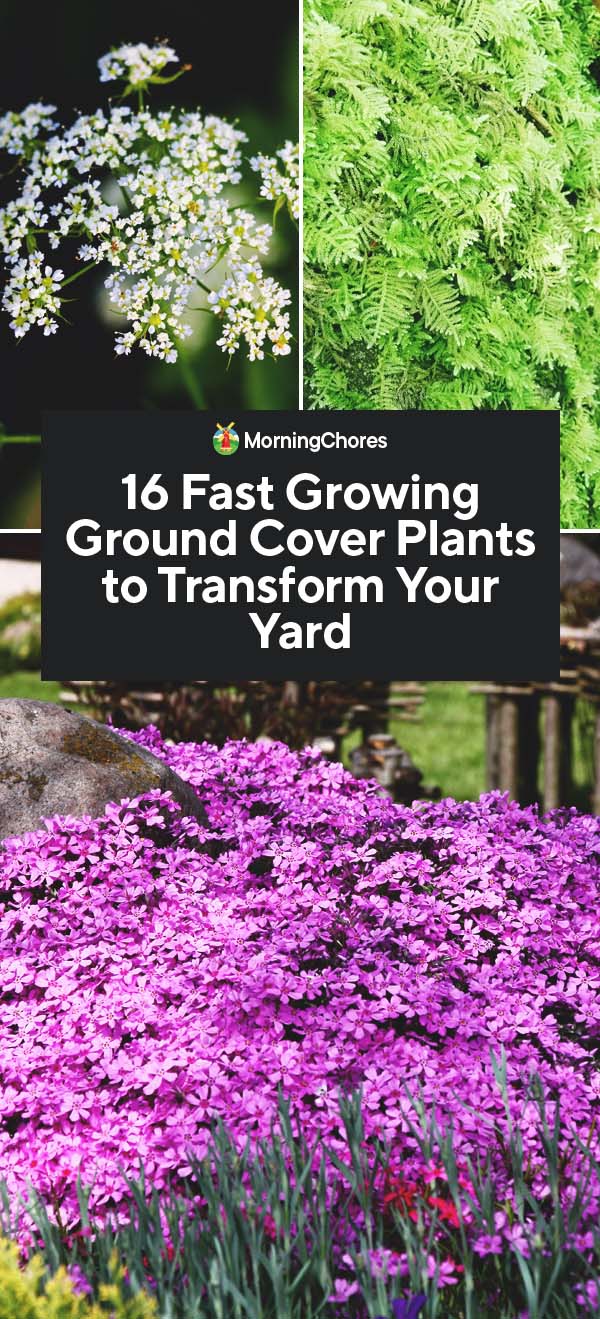Ground cover plants are important in landscaping and garden beds because they offer visual appeal, help keep weeds at bay, and cover areas other plants can’t. They’re a low-maintenance ground cover that gives you instant gratification, but you may be waiting months for the grass to establish. What can be done to address the situation? Fast-growing ground cover plants provide what you want in your garden without the lengthy wait.
For those parts of your yard where nothing thrives, a fast-growing ground cover plant is ideal. You’re probably familiar with the problematic locations, such as beneath trees. These ground cover plants help to crowd out weeds and are low-maintenance.
Remember this: choose a ground cover that is appropriate for your location, and remember to pick one. If it grows in the right environment and conditions, it will only grow quickly. Fortunately, there are several options for your yard, so you can be sure to find something.

16 Options for Fast Growing Ground Cover Plants
1. Wild Thyme(Thymus serpyllum)

Creeping thyme and mother-of-thyme are two names for wild thyme. Landscapers utilize it to fill in places between pavers, sidewalks, bluestone, and garden paths as a popular groundcover around edging.
Wild thyme, which can be cultivated as a perennial in USDA hardiness zones 4-8 in North America, is native to Europe. Its tiny, delicate pink flowers add a little burst of color to your garden or landscape. It gives off a warm, peppery aroma, akin to what you would smell in your pots on your patio if you touch it or walk on wild thyme.
Wild thyme is drought tolerant, which gardeners appreciate. It can withstand significant foot traffic and grows to be 3 inches tall. Wild thyme is a excellent option if you want a plant for your garden path.
2. Moss Phlox (Phlox subulata)
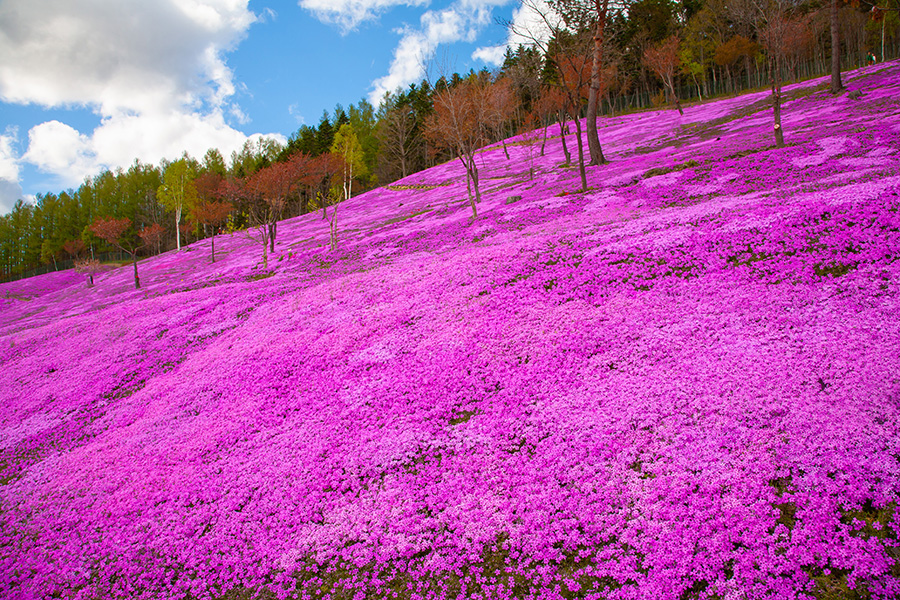
Moss pink or creeping phlox are two names for this plant. It’s a native of the United States that thrives in the east and central states. This attractive ground cover is suitable for USDA hardiness zones 3-9 gardeners.
It grows to an average of 6 inches in height, compared to other ground covers. Moss phlox is resistant to soil erosion, drought, deer, and air pollution, which is one of the reasons it’s attractive. Plant moss phlox if you have a deer problem or are having erosion problems in an area. There aren’t many ground covers that are better for erosion control than this one.
Moss phlox can range in color depending on the variety you cultivate. In order to add different bursts of color to your landscape, you can get white, pink, red, blue, and purple varieties.
3. Trailing Periwinkle(Vinca minor)
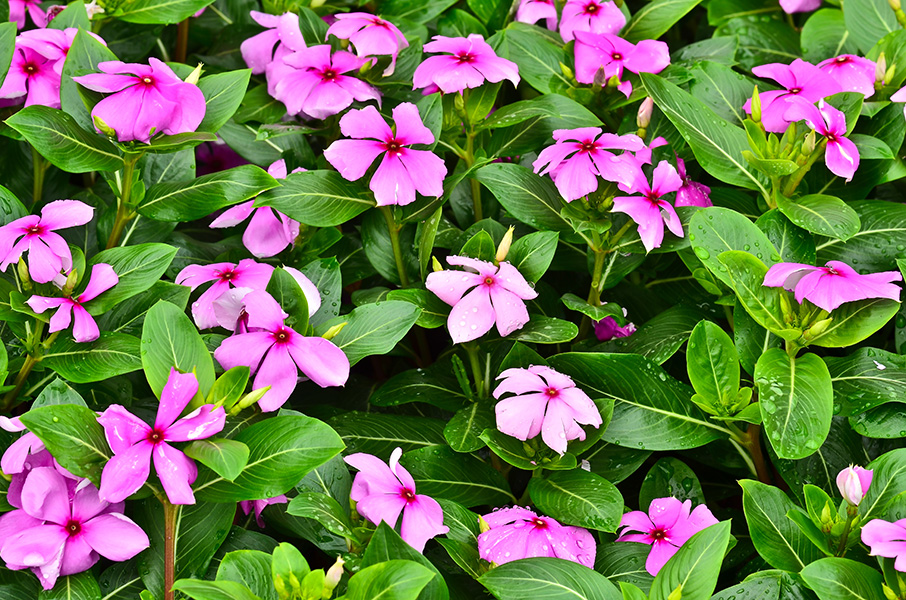
Periwinkle is a lovely periwinkle-colored blooming ground cover that brings color to your garden. The aroma is wonderful and works well in any area near your outdoor or porch.
This ground cover will quickly spread across your garden if you leave it unattended. It grows quickly, so you’ll want to keep an eye on it. Overtaking your whole garden is not something you want.
Periwinkle may be found on the bottom of your trees or on a rock wall because it thrives in both light and shade. This ground cover can be used to provide fillers in a variety of situations.
4. Sweet Woodruff (Galium odoratum)

Woodruff, or sweet woodruff, is a Eurasian native perennial ground cover. Sweet woodruff has naturalized over time and thrives in thousands of home landscapes, from USDA zones 4-8.
In woodlands, rock gardens, and borders, sweet woodruff thrives in damp, shady places and is a fast-growing ground cover plant. You’ll be astonished at how quickly it grows if you plant it in these regions!
Sweet woodruff leaves behind a fragrant that is reminiscent of freshly mown hay, which is another reason to adore it. That smell is sure to attract everyone’s attention. Sweet woodruff puts out little white blooms in the springtime, which are delicate.
5. Variegated Snow on the Mountain(Aegopodium podagraria)
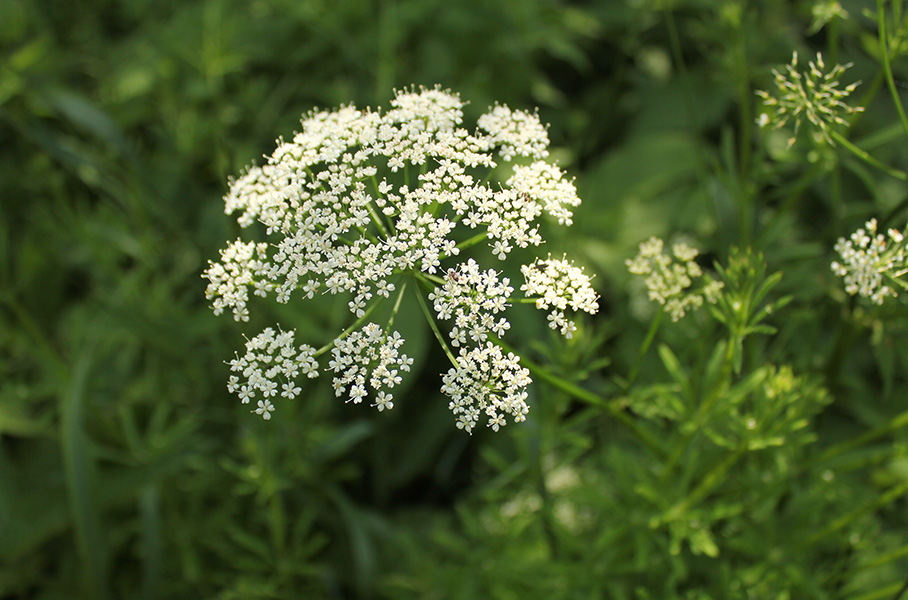
Are you looking for a shade-tolerant ground cover? Take a look at this plant before deciding. Bishop’s weed or goutweed is a term used to describe variegated snow on the mountain. The plant has umbrella-like clusters of white flowers and is a soft green and creamy white color. As a result, the mountain is named Snow.
This ground cover grows to a width of 18-24 inches and is 10-inches taller than typical. Because it loves the shade so much, gardeners adore this ground cover in barren areas under trees. It’s ideal for USDA hardiness zones 3-8 in woodland environments.
6. Aubrieta (Aubrieta deltoidea)
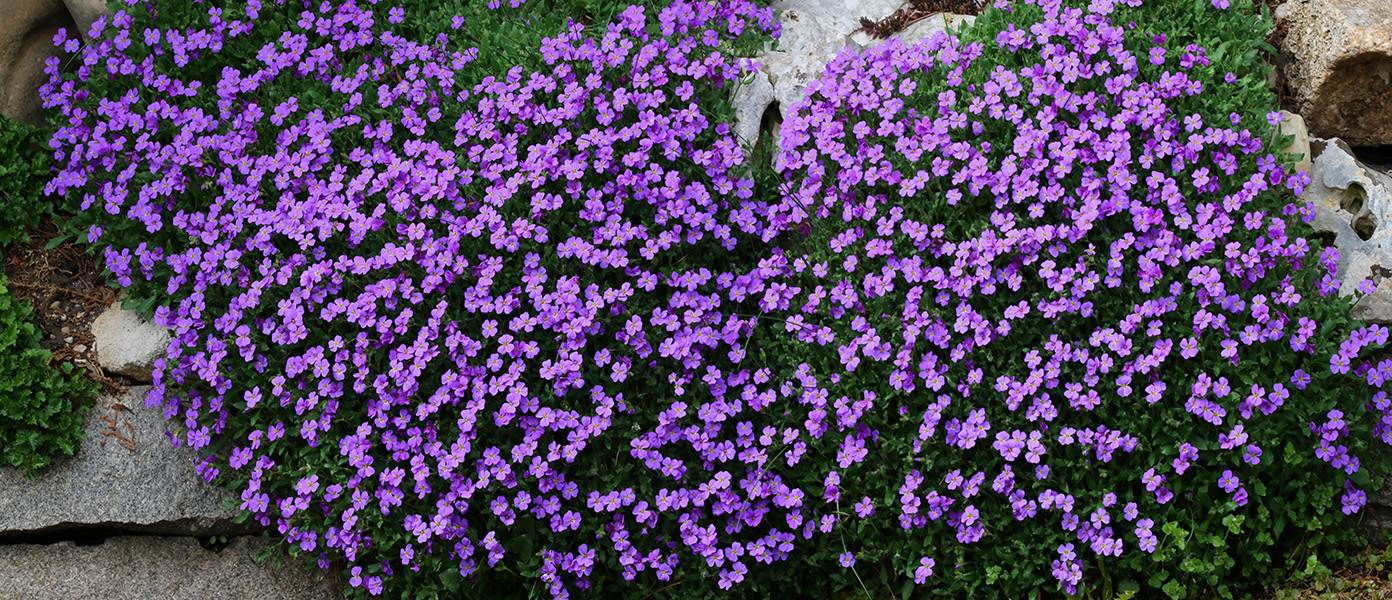
Aubrieta is an easy-to-care-for evergreen perennial that originated in the Mediterranean regions, so it prefers hot areas with little rain. Finding a ground cover for sunny areas can be difficult, but Aubrieta is an excellent option. USDA hardiness zones 4-8 are home to Aubrieta.
Aubrieta is connected to yearly garden veggies like cabbage and broccoli, despite the fact that it belongs to the Brassicaceae family. While it belongs to the same family as the food plant Aubrieta, it is an ornamental ground cover that may not be eaten. That’s weird, isn’t it?
Make sure your ground cover plant gets 4-6 hours of sunlight every day if you want it to thrive quickly. It grows to be 24 inches broad and reaches 6 inches tall. From early spring until early summer, this plant produces bright purple blooms that contrast with grey-green leaves.
7. Firecracker Sedum (Sedum)
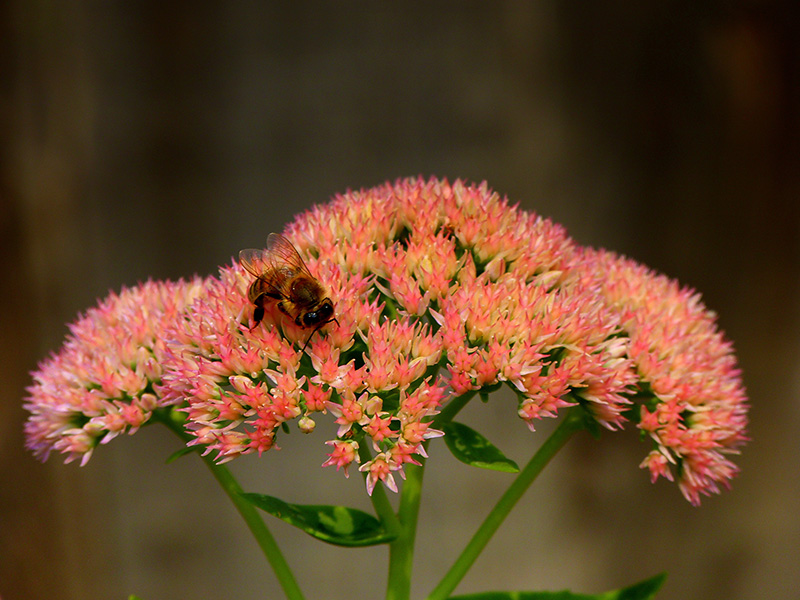
Are you looking for a colorful fast-growing ground cover plant that thrives in bright areas? If you’re looking for a ground cover, Firecracker is worth a try. It grows deep burgundy leaves in thick mounds that prevents weeds from taking over your property. It is suited for USDA hardiness zones 4-9 and produces strong plants.
Firecracker sedum’s rabbit-resistant foliage is one of the reasons gardeners like it. Late in the summer or early in the fall, it produces little pink blooms. Butterflies and other important pollinators are attracted to the flowers in your garden.
Make sure that this plant gets six hours of direct sunlight each day to thrive properly. When grown in suitable circumstances, it grows to a height of 6 inches and a width of 18 inches.
8. Dragon’s Blood Sedum (Sedum)

This sedum is related to Firecracker Sedum and may be found here. One of the toughest and most adaptable weed-suppressing ground covers is this one. Sedge grows in a range of environments, including USDA hardiness zones 3-8. Dragon’s blood sedum is tough. It thrives in both full sun and partial shade, but it also thrives in poor soil, which allows you to plant it anywhere you choose.
Because it has trailing stems that root readily, it grows like a creeping Jenny (described below), making it simple to propagate. It does better in rock gardens, beneath the tree, and other places than being grown in containers as a spiller. The Dragon’s blood sedum will flourish in any case if nothing else does.
9. Golden Creeping Jenny(Lysimachia nummularia)

The fragrant ground cover herb, golden creeping Jenny, prefers wet environments to thrive. Growing it in full sunlight will help the plant produce more vibrant colors, despite its ability to thrive in partial shade.
This plant thrives in USDA hardiness zones 3 through 9, however it requires a lot of water. In drought-prone regions, it doesn’t do well. Try it on a walkway bordering a pond, along a path beside a wall, or around the edge of a pond. In mixed container gardens, it performs well as a spiller.
Long, trailing stems with bright yellow blooms and spherical leaves characterize the golden creeping jenny. It grows quickly, eliminating weeds and covering vast surfaces quickly. It’s a good idea to keep in mind that some golden creeping Jenny cultivars may be aggressive. The Aurea variety is a well-behaved plant that won’t take over your whole garden.
10. Mazus (Mazus reptans)

Another low-maintenance, fast-growing ground cover plant that thrives in USDA hardiness zones 4-9 is shown here. Mazus thrives in partially shaded environments, but it can also flourish in full shade.
When the weather is hot, Mazus must be kept moist. It begins to bloom in the early spring and remains green all year. It will bloom throughout the summer, and in some cases even into the fall, if it grows in the proper environment.
This is an ideal ground cover for stepping stones and along walls, since it only grows to be 2 inches tall. You may propagate it simply by transplanting little plugs from mature plants in early spring or autumn. You may also try planting root cuttings in the autumn after taking them up during the summer.
11. Bearberry (Arctostaphylos uva-ursi)

For your dry, sandy, rocky soils, bearberry is a low-growing shrub that will thrive. This plant thrives in the wild near the coast, where other plants can’t survive. Clay is the one thing it refuses to accept. It has a foot-high height and grows in zones 2-7. Hummingbirds and butterflies like it, while deer avoid it.
12. Big Root Geranium (Geranium macrorrhizum)

The gorgeous magenta blooms on semi-evergreen aromatic leaves make this perennial ground cover a standout. It grows to be about a foot tall and two feet broad in zones 3-8. It resists pests and deer, and it can handle drought, humidity, poor soil. From sun to shade, big root geranium thrives.
13. Fern Moss (Thuidium delicatulum)

Fern moss thrives in partially sunny to shady places, creating a delicate layer of evergreen yellow-green leaves. The leaves resemble little ferns, hence the name. Fern moss thrives in damp, windy conditions. It can be found growing in zones 3 through 11.
14. Japanese Spurge (Pachysandra terminalis)

In the spring, tiny white flowers appear on Japanese spurge, which has gorgeous glossy green leaves. It rapidly spreads in shady areas, forming a dense carpet. It grows in zones 4-8 and requires consistent moisture. Spurge in Japan stays compact, so you don’t have to struggle to keep it under control. It’s one of the best things about spurge.
15. Wintercreeper (Euonymus fortunei)
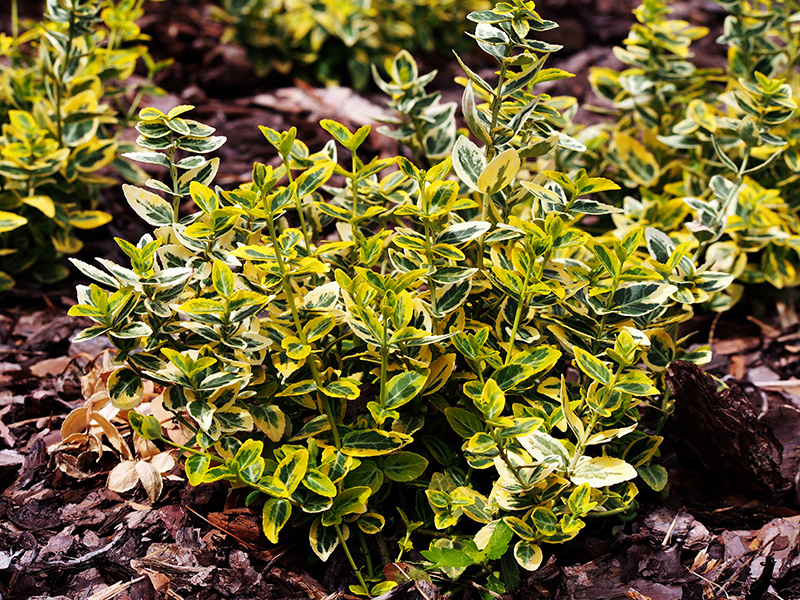
The euonymus family of wintercreeper includes crawling along the ground in full sun, part sun, or full shade. In zones 5-8, it prefers moist, well-drained soil. This lovely plant has glossy green leaves that stay green throughout the year. It grows to be about a foot tall and spans roughly 20 feet.
16. Juniper (Juniperus conferta)
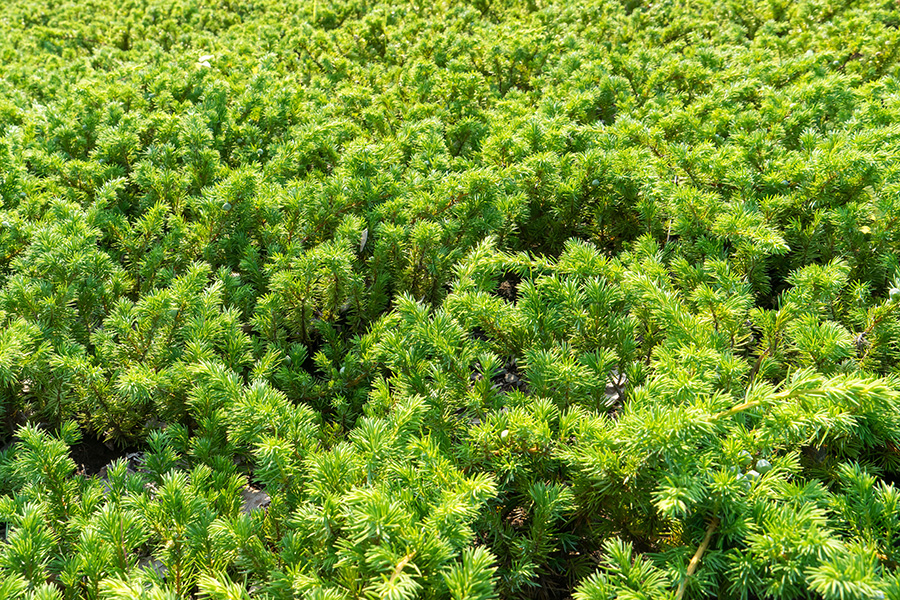
Blue Pacific juniper is the champion of the juniper ground covers, which spread quickly. It prefers zones 6-9 and is drought tolerant. In full or part sun, it grows to about a foot high and spreads 5-6 feet. The feathery needles become gray-green in the winter, giving the drab surroundings some brightness.
What’s Missing?
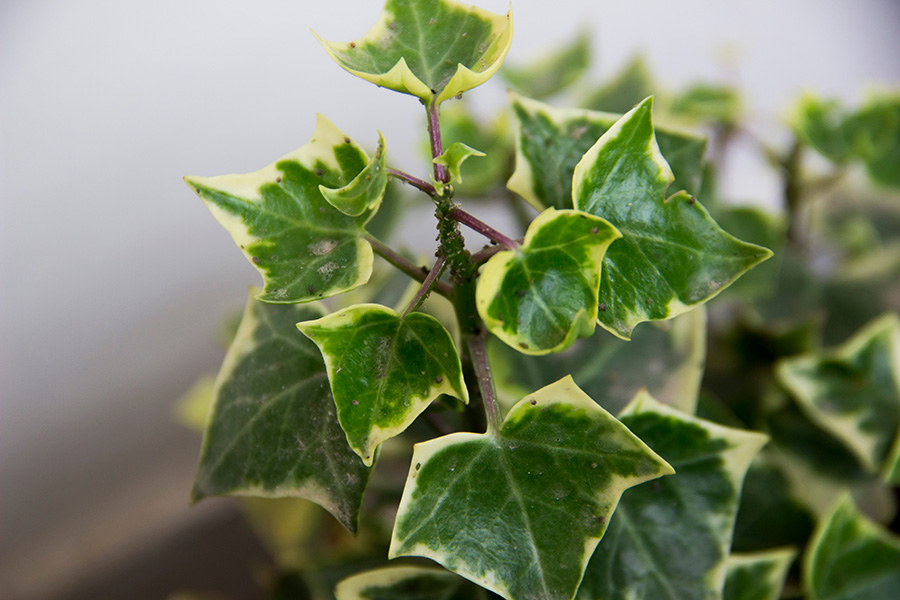
Several options, such as English ivy, ice plant, and bugleweed, were left off of this list since they are not normally seen. They can also become invasive since they are fast-growing ground cover plants. Consider planting one of these if you have a confined space, but proceed with caution. It takes them little time to go from tiny to colossal.
Final Thoughts
In your landscape, you may occasionally need to include fast-growing ground cover plants. One of these ground covers will grow quickly, covering bare areas in your landscape or under the shade of trees if nothing appears to be growing well in an area. These plants sprout up fast and eliminate weeds, adding brightness where it is most required.
